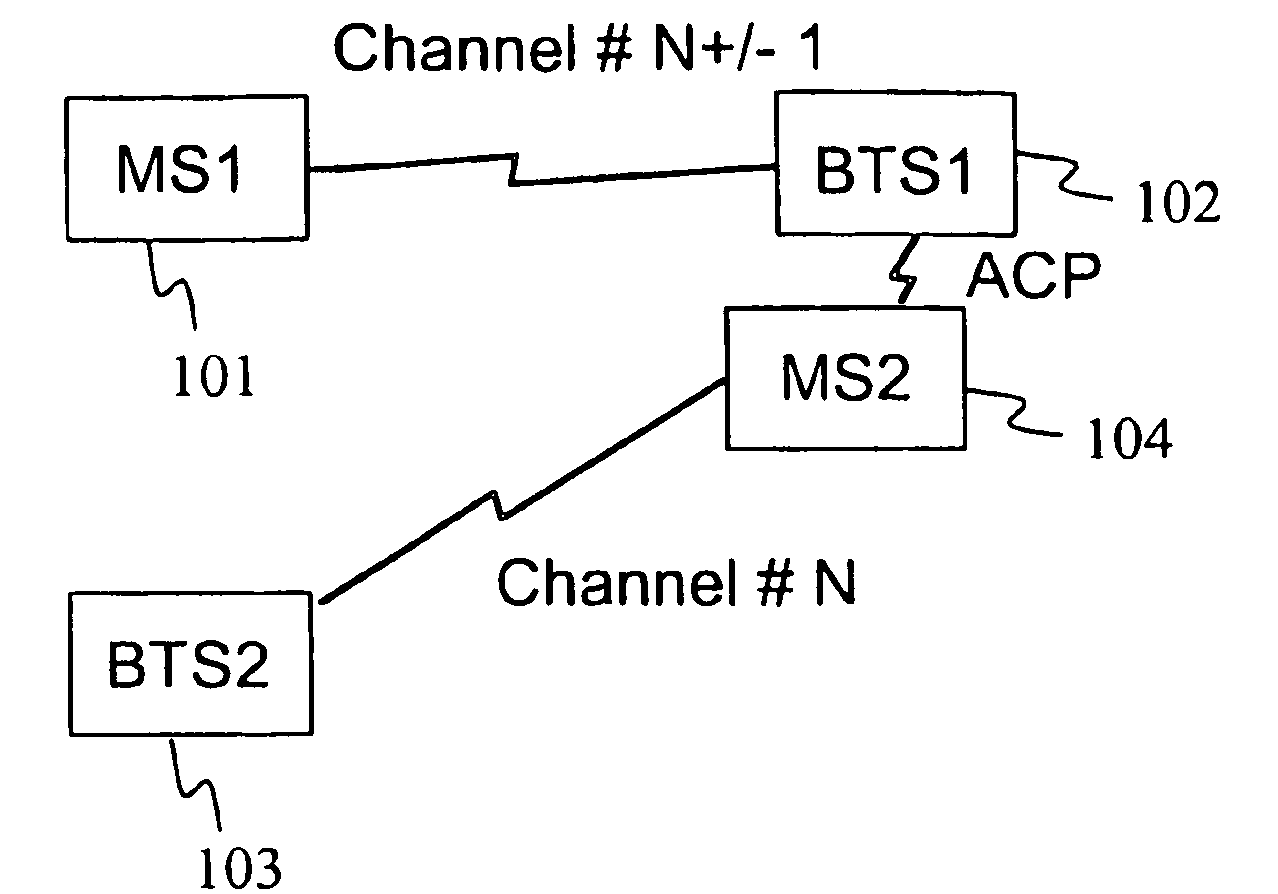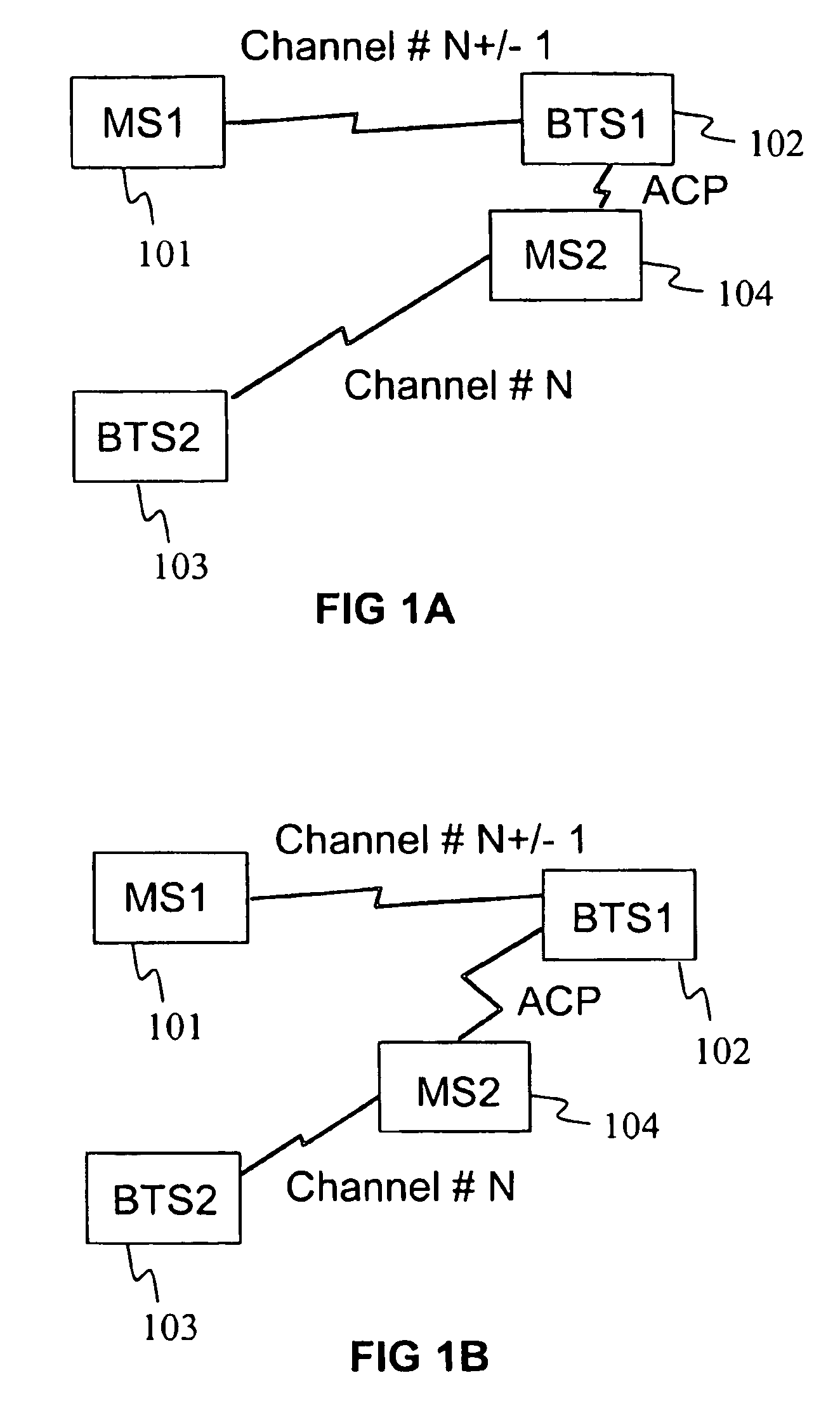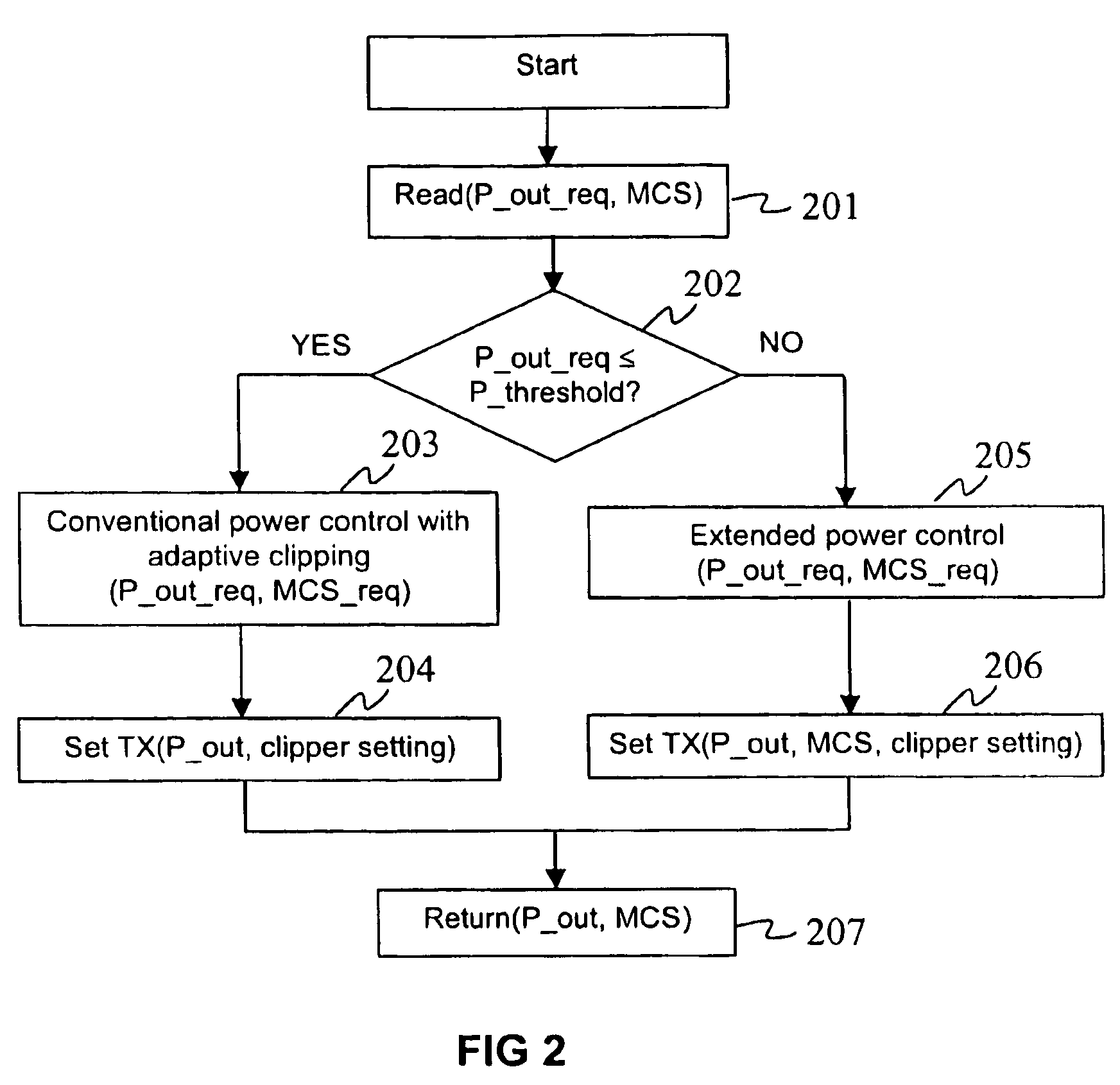Power control
a power control and power technology, applied in the field of power control, can solve the problems of small efficiency, interference with the reception of adjacent base stations, and low power efficiency of the whole system, and achieve the effects of increasing system efficiency, high maximum output power, and high efficiency
- Summary
- Abstract
- Description
- Claims
- Application Information
AI Technical Summary
Benefits of technology
Problems solved by technology
Method used
Image
Examples
Embodiment Construction
[0050]FIGS. 1A and 1B illustrate systems wherein the invention may be employed and a basic idea of the invention. Both Figures comprise a first mobile station (MS1) 101, a second mobile station (MS2) 104, a first base station (BTS1) 102 and a second base station (BTS2) 103. BTS1 and BTS2 operate on adjacent channels. MS2 transmits to BTS2 on channel number N and BTS2 receives signals on channel number N. Correspondingly, MS1 transmits to BTS1 on channel number N+1 (or N−1) and BTS1 receives signals on channel N+1 (or N−1).
[0051]In FIG. 1A, MS2 is in proximity of BTS1. The emission mask of the MS2 has to be such that BTS1 is able to receive signals from MS1 even when MS2 is this close to BTS2. That is, ACP of MS2 on channel N+1 (or N−1) may not be so high that it would interfere with the signals of MS1 at BTS1. In conventional power control algorithms this ACP requirement has to be met over the whole area of the system; that is, irrespective of the distance between MS2 and adjacent b...
PUM
 Login to View More
Login to View More Abstract
Description
Claims
Application Information
 Login to View More
Login to View More - R&D
- Intellectual Property
- Life Sciences
- Materials
- Tech Scout
- Unparalleled Data Quality
- Higher Quality Content
- 60% Fewer Hallucinations
Browse by: Latest US Patents, China's latest patents, Technical Efficacy Thesaurus, Application Domain, Technology Topic, Popular Technical Reports.
© 2025 PatSnap. All rights reserved.Legal|Privacy policy|Modern Slavery Act Transparency Statement|Sitemap|About US| Contact US: help@patsnap.com



